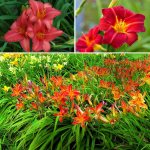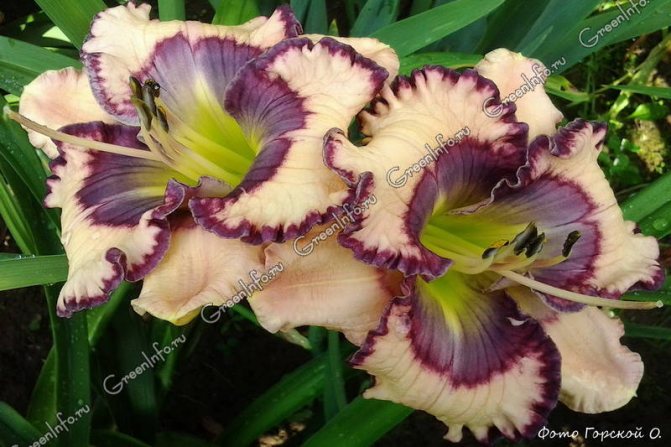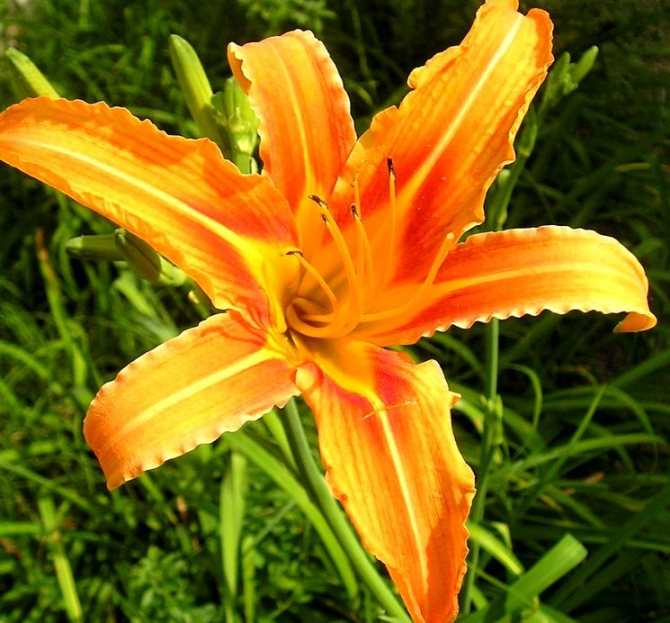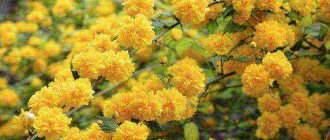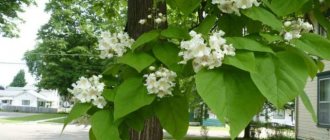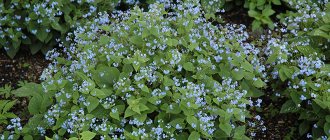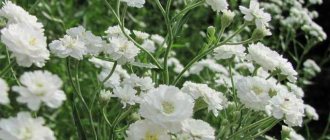Day-lily, the flower is unpretentious, easy to care for, but most importantly - very beautiful. It is for this beauty that more than one generation of flower growers has been growing it. It is in almost every flower garden. Today there are many varieties and types of daylily. And if not so long ago only two species of daylily were grown - orange and yellow, today the color range of daylily flowers is much wider.
In addition to traditional tall daylilies, low-growing ones are also grown. The daylily belongs to the Asphodel family and the Daylily subfamily. It is often called a lily and is confused with it. But, despite the similarity of flowers and names, these are completely different plants. The daylily has another, less common name - Krasodnev. As mentioned above, daylily caring is simple and easy. This perennial is very hardy and does not require much maintenance. But in order to obtain abundant and long-lasting flowering of the daylily, a number of rules should be followed.
Brief description of the species
Gardens with garden daylilies (hemerocallis hybrida) look amazing. In nature, these unique flowers grow in Asia. They were brought to Europe in the 16th century and quickly gained popularity. The plant owes its name to lilies - they have very similar flowers in shape. It is one of the most beautiful and easy to maintain plants in gardens.
Perennials produce a single stem, around which there are long, equidistant leaves, somewhat saber-shaped. At the top of the daylily shoots, there are exceptionally beautiful flowers that attract attention.
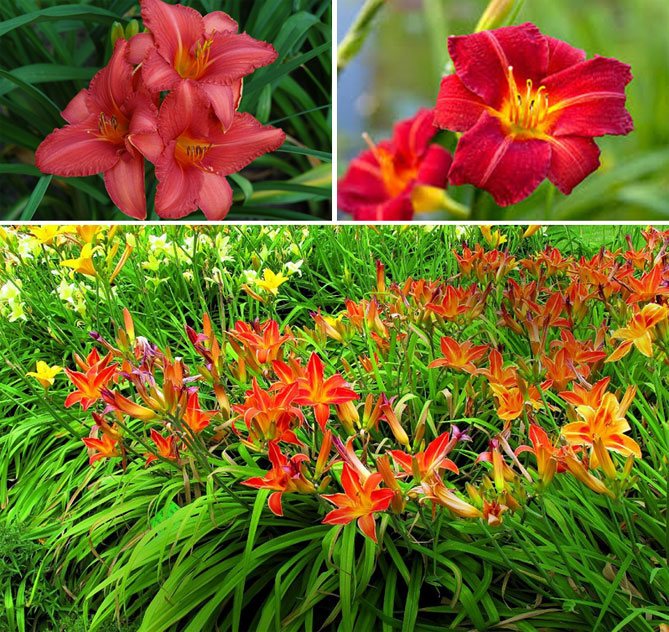
Large funnel-shaped flowers consist of several longitudinal petals, curved outside, surrounding the anther. Flowers in several pieces are collected in inflorescences of orange, reddish or yellowish color. Older varieties have tapering flowers, like a lily. Newer hybrid varieties usually have semicircular, round flowers with curled petals or single ones.
Flowers of some species are open early in the morning, others at the end of the day, remain open all night, and fall off the next day. However, this is not a problem, because the proper care and cultivation of daylilies produces many new flowers every day.
Daylily roots are fleshy, often forming stolons, which are sometimes called bulbs.
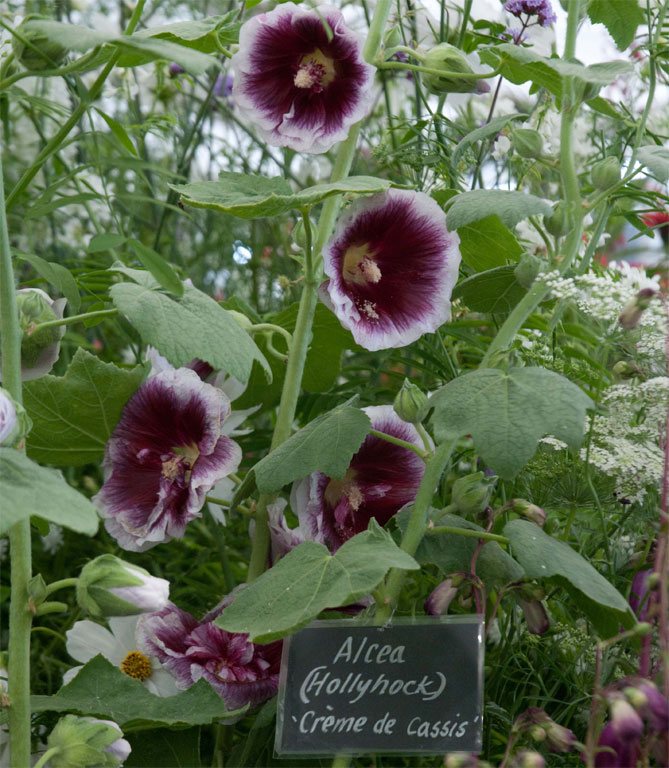

About reproduction
All daylilies for further planting and care in the open field reproduce in a vegetative way. For example, by rooting a leaf rosette, dividing. Daylily seeds are rarely planted. This is because seed propagation results in a loss of differentiation. The only exception would be seeds purchased from a reputable manufacturer.
The culture is quite unpretentious, so the transplantation process is easily transferred. It is enough to remove the bush from the ground, divide the planting material with a knife into shoots with rhizomes.
Growing from seeds is carried out at the end of winter. They are soaked before planting. After pecking, they are seated in cups with a universal type of soil. Be sure to make drainage holes, feed with fertilizers. The transplant is done at the end of May.
Planting a daylily - expert advice (video)
Varieties and types of daylilies
There are many varieties of daylilies. Our gardens most often abound in one species - the most popular representative is the hybrid daylily.In fact, it is a multi-species hybrid specially selected for cultivation in our atmospheric conditions, more resistant to diseases.
Its bloom lasts a very long time - from May to September, and the gardens have been decorated for the longest time. On one shoot, daylilies produce from one to ten flowers of different colors - yellow, red, orange and pink. There are many ways to organize a daylily garden.


Daylilies of other species are more monochromatic. The following types are distinguished:
- Daylily brown-yellow in Latin Hemerocallis fulva produces orange-red flowers. Produces many flowers, up to 12 per shoot. They have a more lumpy shape, large flowers. The plant produces many leaves that can look quite herbaceous, so it is worth planting ornamental grasses next to this plant.
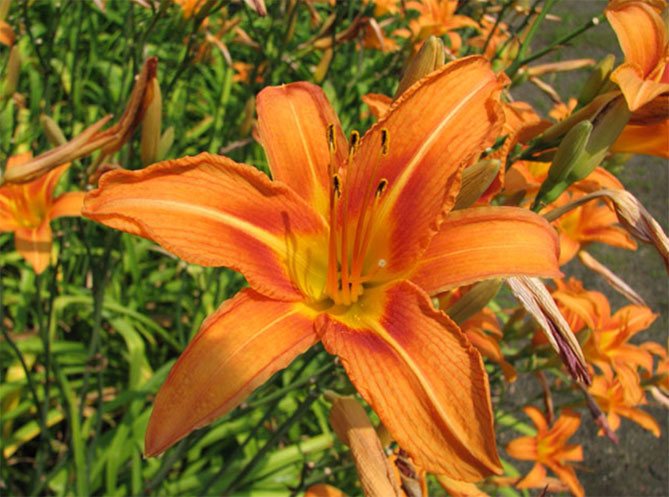

- Daylily yellow in Latin Hemerocallis flava has a slightly smaller form. A plant that produces yellow flowers that are slightly thinner but have a standard lily-like appearance. The yellow lily produces a lot of shoots and has a grassy crown. Separate flowers at the ends of the shoots appear among the herbaceous, rather dense leaves. It is an easy-to-grow species with an intense, pleasant scent of flowers.


Both species are often used in our gardens and are popular for their pleasing flowers and dense bush shape. Other species have very similar cultivation requirements.
Daylily varieties are available in many varieties with different color patterns. On the market you can find bulbs and seedlings of many varieties with different shapes and sizes of the bush, so they are also divided by height.
Low grades are the most. This group also includes the famous Stella de Oro daylily, which blooms in June-July. The variety produces intense yellow flowers. The stem reaches a maximum height of 30-40 cm.
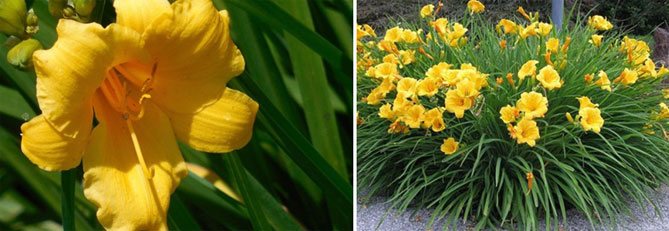

Photo. Daylily of the Stella de Oro variety
Little Paul gives exactly the same dark yellow flowers, the flower is distinguished by a darker color in the middle.
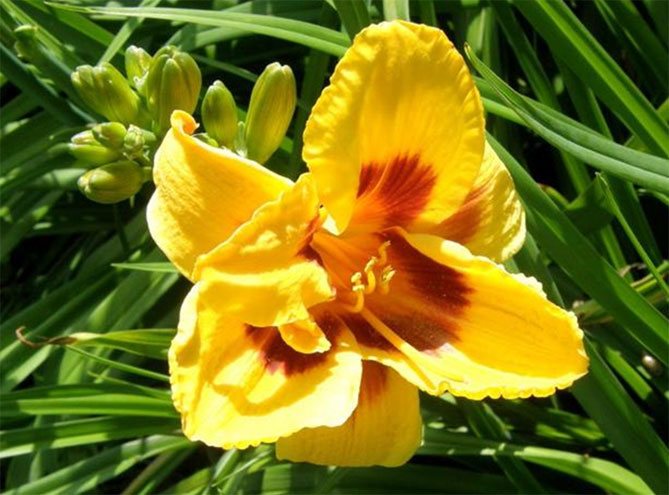

Photo. Daylily of the Little Paul variety
Pixie Parasol has an interesting color, with apricot-colored petals, very delicate, extremely decorative.
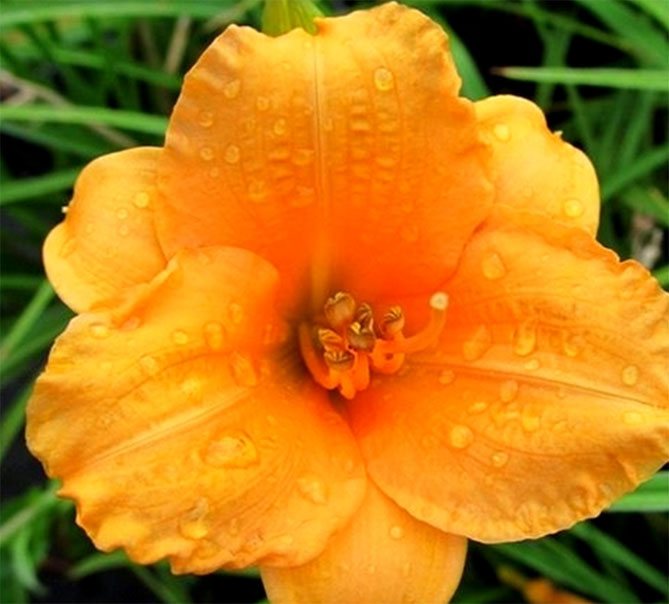

Photo. Daylily of the Pixie Parasol variety
Also noteworthy are the varieties of daylily with a higher growth, the height of which reaches 90 cm. The tall varieties look beautiful against the background of the rabatka, their leaves create a background for small plants, and their bright flowers are a unique decoration. For example, Boney Maroney with delicate yellow flowers.
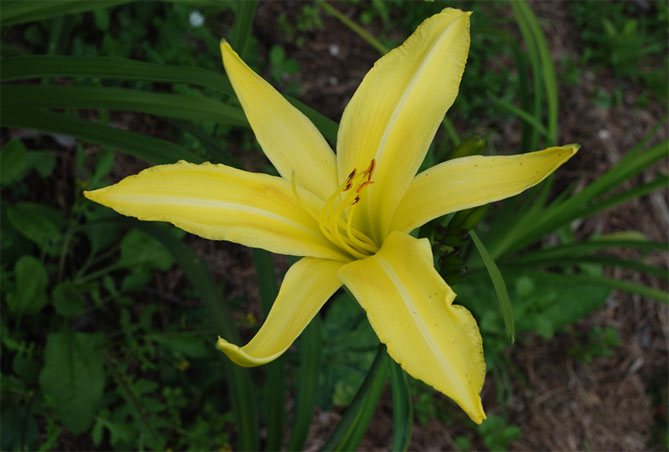

Photo. Daylily Boney Maroney
Daylily after flowering
There is a special classification, guided by which you can determine how to properly care for plants after flowering. according to this division into species, daylilies are deciduous, evergreen and semi-evergreen. Representatives of the first group, after flowering, begin to turn yellow, and their leaves gradually dry out. In such varieties, the aerial part is cut off before winter, leaving no more than 15-20 cm of shoots. They do not need to be covered for the winter, since these crops are highly winter-hardy. Semi-evergreen and evergreen varieties require shelter only in cold regions or in a snowless winter if the average daily temperature drops below -20 degrees. You can use straw, sawdust, or dry branches as cover.
Planting daylilies in autumn and spring
There are 3 ways to breed daylilies:
- dividing the bush;
- reproduction by seeds;
- reproduction by children (offspring).
There are no strict guidelines for when to replant daylilies. You can transplant any time from spring to autumn. Frost-sensitive daylily varieties are best planted in spring so they can take root well by fall. Saplings are planted at a distance of 50-100 cm. If the seedlings are bought in a store, you need to dry them slightly, cut off the tips of the leaves (this procedure allows you to strengthen the roots).
Some daylily leaves are slightly yellow. Don't worry about it - this is normal, not harmful to the plant.
If it is not possible to immediately plant the purchased daylily sapling, you can store it for several days in a cool place before planting.Before planting, the roots of the plant are soaked in water for 1-2 hours.
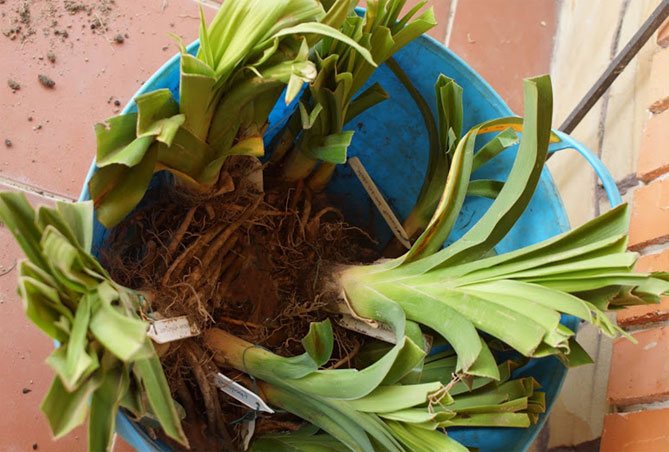

Reproduction by dividing the bush
The daylily propagates by dividing the bush. To do this, you need to carefully divide the adult rhizome lump.
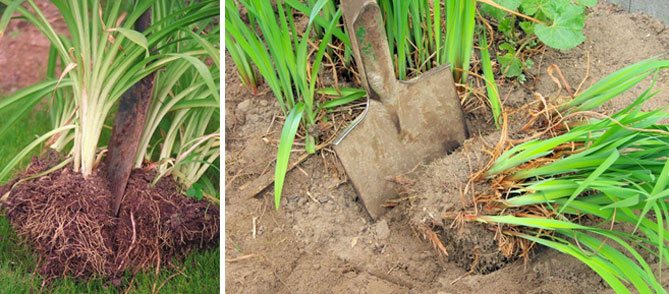

The daylily bush is dug around neatly. Then, with a sharp knife, the rhizome is cut into pieces with separate stems. If the bush is very old, overgrown, the rhizome becomes huge. Then you have to chop the lump with the rhizome with a shovel into pieces.


Then each part is more delicately disassembled into seedlings. Each daylily seedling should have a good rhizome with roots and stolons. Cut the leaves and stems of the seedling with a secateurs.


The seedling is ready for planting. We dig a hole slightly wider than the size of the rhizome. Pour peat or compost soil into the hole. We plant a seedling, sprinkle the root collar with earth, make a mound with a 2 cm cone. After planting, tamp and water. The distance between seedlings should be at least 70 cm.
Daylily propagation by air babies (proliferators)
If the daylily plantings are old, it becomes difficult to separate the rhizomes, you can prepare seedlings of seedlings by the proliferation method. This should be done at the beginning of the growing season, when young shoots are 5-7 cm high. On the shoots during this period, you can see leaf rosettes with primordial roots. When the peduncle dries up, a part with an airy baby is cut off and placed in water for rooting.
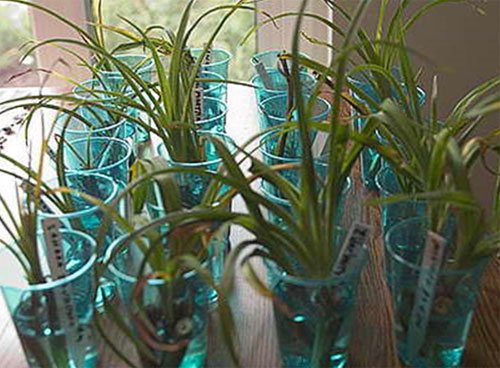

Sprouted daylily seedlings are planted in containers. In September, the plants are planted in a permanent place.
Reproduction of daylily from seeds
Seed propagation is much more difficult at home. The procedure begins with artificial pollination of daylily flowers - we take a brush, dip it in pollen on the anthers of the stamens, carefully apply the pollen to the pistil with a brush. Unfortunately, only a few pollinations will result in a seed sac. Not all of the resulting seeds germinate and ripen. This is the difficulty of growing a daylily from seeds on your own.
- The seeds can be purchased or harvested by yourself after flowering.
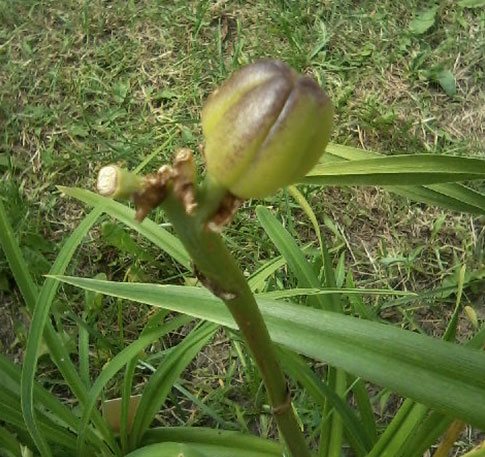

- The seeds are not stratified. You just need to dry them on the table.
- Before planting, soak the seeds for 24 hours in warm, non-chlorinated water.


- Then disinfection is carried out - a bath is made with water and the addition of a surface disinfectant (hydrogen peroxide, potassium permanganate) for 10-15 minutes.
- Then the daylily seeds are washed with cold boiled water.
- Germinating seeds are transferred to pots with peat substrate and sand (add 15% perlite / styrene).
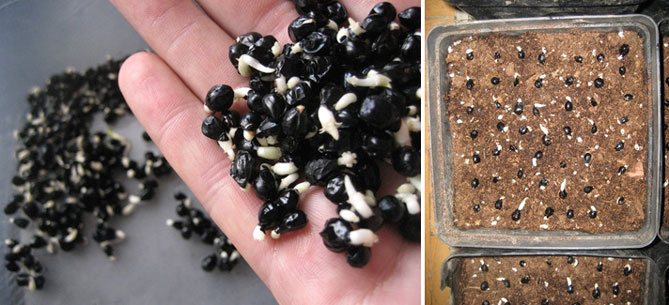

- When the seedlings grow 12 cm, a pick is made and planted in pots. The pots are placed on a windowsill well-lit by the sun's rays.
- Seedling care consists in watering, fertilizing, pest control, fungi.
Seedlings sown in early February, well fed, can bloom in August - September.
Planting bulbs, stolons
Saplings are not the best way to breed daylilies. These plants do not need a lot of heat during growth and germination, so you can simply plant the bulb itself in the ground. In fact, daylilies do not have typical bulbs, but stolons that form on the roots and are used for vegetative propagation of the plant. Summer residents often call them bulbs. It may happen that the bulb will release a shoot, the plant will look like a seedling, sometimes all leaves and rhizomes are removed before planting, especially if they are already old. Thanks to this, the stolon will sprout faster.
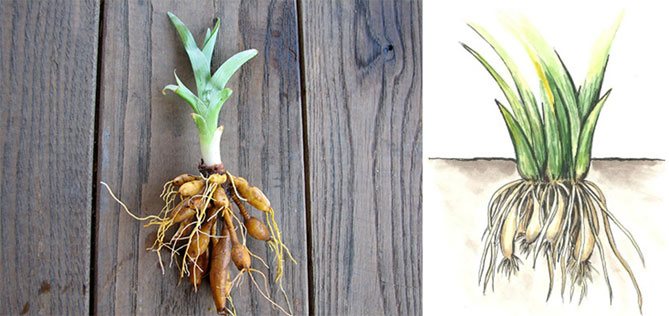

The stolons (bulbs) of daylilies are planted simultaneously with the seedlings of other ornamental plants - in the spring, before the start of the growing season. They are completely frost-resistant, therefore, even in the early stages of growth, they tolerate cold well and germinate quickly. The next moment of planting, when these perennials are taken, is the end of August - September.
Choosing a landing site
- Soils. Daylilies are grown on soils with high fertility.Here they develop faster, subject to receiving a large amount of moisture.
- Daylilies can be planted in full sun and partial shade. The more sunlight the plant catches, the larger the flowers. In the shade, the daylily will produce more lush foliage that resembles ornamental grasses.
Attention! The only thing that unpretentious daylilies do not like are shady positions, in the shade the plant stops blooming.
The daylily does not need a special position. All gardens, with the exception of the waterlogged ones, are suitable for growing. First, you need to supply the substrate with humus or compost so that the soil for the daylily has a supply of mineral components to begin with.
Daylily transplant
There is no need to repot the plant regularly. Sometimes you can replant the bulbs, because the plants grow quite quickly and can become tangible competitors for each other.
Characteristics of the daylily flower
A distinctive feature of the daylily is its high drought resistance. This characteristic feature of the culture is provided by fleshy and thick adventitious roots, which are able to provide the plant with the necessary moisture even in dry weather.


Figure 1. External features of the daylily
The plant has large flowers of yellow, orange or red-brown hue (Figure 1). As a rule, they are collected in small inflorescences, but at the same time no more than three opened buds can appear on the plant, and the duration of each flowering is about three weeks.
Growing and care
Watering
Watering is the main care activity. Daylilies grow best in soils with relatively high levels of moisture that do not dry out too quickly. If there is enough moisture, the plant grows well and produces beautiful flowers. Although they are very durable, they suffer greatly during drought, during this period they should be irrigated especially often.
Attention! Variations of daylilies with red or purple flowers may not tolerate heavy rainfall and too much sunlight. Therefore, in their case, moderation is recommended.
For a long time without water, you can leave old roots, which have a very extensive system of rhizomes and can easily penetrate into deeper underground layers.
Important! Watering daylilies must be done carefully so that the leaves do not get wet - this can cause fungal diseases. Water is poured in a not too strong flow around the entire cluster of roots, gently on the ground.
Daylily care in autumn and winter
Caring for daylilies does not require preparation for wintering, the gardener does not need to do anything. Perennial rhizomes winter well, do not freeze even in very cold months. Therefore, you can leave them in the ground - you do not need to dig them out or clean them if you do not want to grow plants in another flower bed. Daylilies quickly produce new shoots, so numerous gardens can be planted from one bush. Autumn care includes only planting overgrown bushes.
Fertilizer
Daylily care includes soil fertilization. The plant has an extensive root system, so it easily receives nutrients from the soil. Flowers without special care can grow up to 30 years in one place, so the land around them is greatly depleted. They do not have too many requirements for care, fertility, so it is enough to fertilize twice a year. A multicomponent mineral fertilizer is used for flowering plants.
Attention! Daylilies are sensitive to excess nitrogen. Therefore, you need to be careful with fertilizing, apply fertilizers in small doses, use multicomponent fertilizers with a balanced composition or compost. Fresh manure cannot be used, daylilies can rot in summer and freeze in winter.
Daylily care
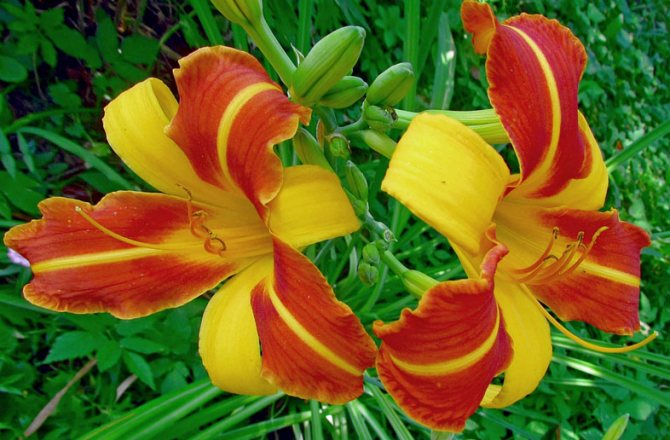

Watering and feeding
Frequent watering of daylilies is not needed. Moreover, they are harmful to him. Excess moisture will weaken the plant and affect flowering.If the summer is not particularly dry, then you can do without watering. There will be enough rain. Daylily is a fairly drought-resistant plant. Its roots are able to extract moisture from the depths of the soil. Therefore, the dry top layer of the earth is not yet a signal for watering.
Top dressing should not be ignored. Regular and correct feeding of the daylily is a guarantee of health and lush flowering of the plant. The first time it is fed in early spring, when the snow melts. Conventional compound fertilizer is suitable for this top dressing. The second feeding will help the daylily get ready for flowering. It is usually held in late April or early May. You can use either the same complex fertilizer or potassium-phosphorus fertilizer. In August, the third and last feeding is carried out, which will help the daylily prepare for wintering. In this case, potash fertilizers are used.
Advice. When choosing a complex fertilizer, pay attention to the percentage of nitrogen content in it. A large amount will stimulate leaf growth to the detriment of flowering. A larger amount is permissible only during the first feeding.
Diseases and pests of daylilies
Plant care includes constant monitoring of the condition of leaves, flowers, preventive measures and control of pests and diseases. During the growing season, various symptoms may appear on the plant:
- bleaching;
- spots;
- strips;
- holes.
Damaged daylily leaves should be systematically removed and destroyed. They may indicate the occurrence of one of the many diseases or the appearance of pests.
In caring for daylilies, the most important thing is to prevent all infections by skillful watering, disinfecting tools, maintaining proper planting distances, taking care of the good condition of the plants and, above all, purchasing planting material from reliable sources.
Bacterial wet rot
This is the most dangerous disease of daylilies. Rot caused by bacteria of the genus Erwinia leads to the loss of infected plants. The disease quickly causes plant rot at the base of the leaves. Infected tissues become soft, and an unpleasant smell of decomposing onions appears. High soil moisture and a sufficiently high ambient temperature can accelerate plant death. During the growing season, the disease spreads very quickly, with the help of tools or various insects.
The reasons for the development of the disease:
- poor care conditions;
- too intensive application of nitrogen fertilizers;
- heavy, moist substrate.
It is best to prevent infestation, as most often it comes with newly acquired plants. All suspicious specimens of planting material should be soaked for about half an hour in a bleach solution, and then planted in a separate place and observed. Fighting the disease is burdensome and not always effective. Severely infected specimens should be removed and disposed of immediately.
Rusty leaf spot
This dangerous disease can gradually kill the plant. The disease quickly spreads to neighboring bushes and negatively affects its health and aesthetic values. The fight is carried out using chemical antifungal drugs with a broad spectrum of action or environmental - Biosept, Biochicol. Infected leaves should be quickly removed and burned.
The disease occurs in the spring and manifests itself as brown spots and pits on the leaves. This is typical for areas with variable frost periods and positive temperatures. When fighting infections and prophylactically on healthy leaves, you can use approved fungicides from the triazole group.
Pests
The most undesirable are "guests":
- aphids;
- spider mites;
- thrips;
- snails, beetles and ants are also pests, although they will not cause plant loss.
Pests usually attack the aerial parts of the plant: leaves, shoots and flowers.Some species also feed underground by damaging small roots. They do not kill the plant, but they can cause stunted growth, disturbed flowering, plant deformation, tissue damage and indirectly contribute to pathogenic infection.
Spider mites
The most dangerous and difficult to fight are spider mites. Ticks multiply very intensively, every 3-7 days, they move to other plants and create new colonies, so the fight should be started as soon as possible.
The tick does not like water. Misting or abundant irrigation of the underside of the leaves is beneficial in reducing invasion. These are mites, not insects, so insecticides are not effective; broad-spectrum acaricides or insectoacaricides are used. Pests very quickly become resistant to many chemicals, so the fight must be carefully thought out. The biological method for controlling ticks is the use of insects.


Aphid
It is the most numerous, widespread, varied pest of daylilies. The appearance of aphids varies depending on the phase of growth. The aphids that feed on daylilies are green. Under favorable conditions, aphids produce up to 50 generations, quickly form colonies, and move to neighboring plants. Knowing the insect's dependence on the host plant is useful in reducing and eliminating the pest. Aphids directly mechanically damage the plant and cause indirect damage, carrying various pathogenic infections, including dangerous viruses. Vapors released by aphids hinder photosynthesis and attract flies and ants. Pest control can be carried out using:
- natural methods (ladybugs or yellow glue flower traps);
- chemicals - actellic, decis, zolon.


Thrips
Thrips feed on plant juices, daylily tissues. In addition to mechanical damage to tissues, they carry various viruses, bacterial, fungal diseases. They feed on leaves and flower petals, eat away the content of anthers, which negatively affects the pollination of plants. There are many drugs available to combat thrips. Summer residents use potash soap solutions.
Mice, voles, moles
Vole mice can eat young shoots. Therefore, an important measure for plant care is the systematic control of rodents.
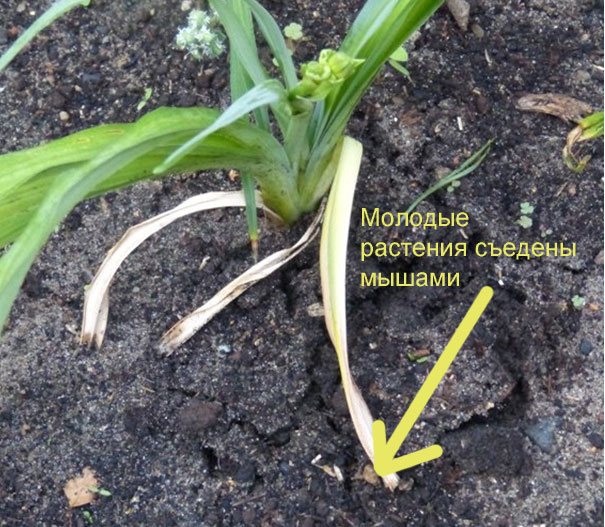

Two-winged (Contarina quinaquenotata)
The appearance of dipterans is observed on daylilies, the larvae of which develop inside flower buds, causing the absence of flowering. In early spring, the insect lays eggs on the buds of daylilies; in the depths of the embryo, a large number of small larvae, 1-2 mm in size, grow. Then, in June, the larvae emerge from the daylily flower, fall to the ground, where they hibernate in cocoons. They appear on the surface in spring to lay eggs on the buds.
In the spring, systemic insecticides should be used. Larvae are difficult to see, especially if vision is poor, but it is easy to notice the characteristic lesion of the daylily buds. Affected buds wither, they need to be removed and burned.


Ants
Ants do not directly damage the leaves and flowers of the daylily, but they act adversely when they build a nest in the ground, inside the root system. Insects contribute to the reproduction of aphids. Ants don't like:
- vinegar;
- baking powder;
- cinnamon;
- fresh tomato leaves located near protected plants.
Ants can be lured into objects of yellow color and taken out of the territory.
Snails, beetles, grasshoppers
Snails are harmful to young daylily seedlings. Pests feed at night, so they are difficult to spot. They do not like rough, cold surfaces, so it is worth sprinkling the ground around with coarse gravel aggregate. In severe cases, you will have to resort to the help of special plant protection products.
Beetles, grasshoppers, moth caterpillars, and wireworm larvae can feed on various daylilies.They do not directly cause plant loss, but the damage can cause serious pathogenic infections, so their numbers need to be controlled.
Growing daylilies in the open field
Growing a daylily outdoors is not difficult. However, this condition applies only to natural varieties, while hybrid ones require more careful care.
In order for the garden to regularly delight you with abundant flowering, you need to choose the right place and time for planting, as well as provide the flowers with optimal care during the growing season. We will consider these features in more detail.
How to grow
In natural conditions, daylilies grow on forest edges, in partial shade. But, since this culture is considered tropical, a flower bed located in a shaded area will not be the most suitable for these flowers. In temperate climates, such an arrangement can lead to the fact that the plants will not have enough light, and there may be no flowering.
Based on these requirements, these flowers are best grown in well-lit areas, although light shade for several hours a day will also be acceptable.
The soil
A much more important criterion is the correct selection of soil for the plant. Despite the fact that daylilies successfully grow on any soil, it is better to provide the plant with suitable conditions for the most abundant flowering.
The best soil is considered to be fertile loam with good drainage. Therefore, if your site has dense clay soil, it must be diluted with sand and compost. Compost is also added to sandy soils, mixing it with a small amount of clay and sod-podzolic soil.
It is important that the area is not too wet. If your garden is located in a low area, you need to additionally equip drainage or plant on raised beds.
From the video you will learn useful tips and practical tips for growing daylilies.
What colors are combined
Thanks to their bright and original inflorescences, daylilies can be used both as an element of a flower arrangement and as an independent garden decoration. In addition, lush leaves and large inflorescences will go well with ornamental shrubs or fruit trees. The main thing is that taller plants do not shade the flower (Figure 3).
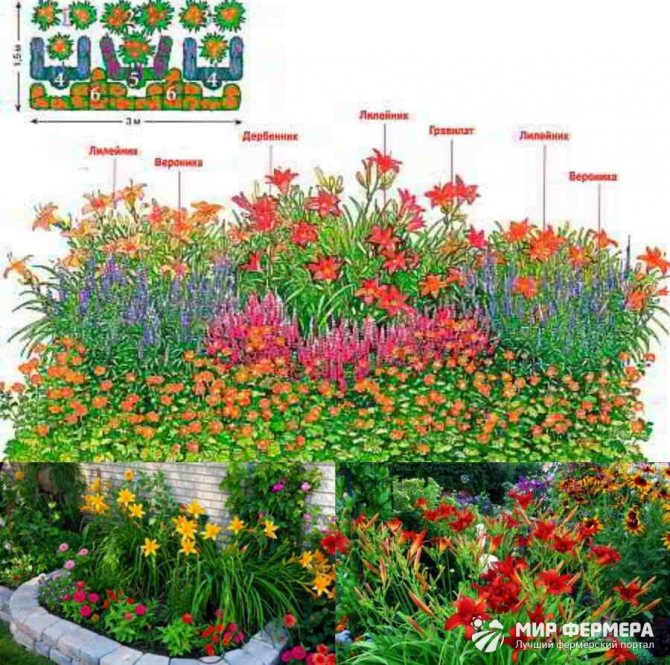

Figure 3. Features of the layout of the flower bed and the combination of flower crops
When planning a flower bed with daylilies, it is important to take into account that at the end of summer these plants stop flowering and lose their decorative effect. That is why, next to the culture, it is necessary to have undersized decorative species (cereals, physicalostegia, yarrow, etc.), which will hide the yellowing leaves of the culture.
Use in landscape design
Daylilies come in many varieties and colors, and are self-sufficient in flower beds. However, they are rarely planted alone. Ornamental grasses are frequent companions of daylilies - large, very expressive flowers look very beautiful among green leaves.


Daylilies are often planted in flower beds with bulbous plants. This is not only due to their beauty and low maintenance requirements, but also because it is one of the few bulbous plants to bloom in summer. Their flowers appear when crocuses and tulips have long faded, and lilies begin to disappear. During this period, rather similar irises compete with daylilies, so you should not combine these plants next to each other in a flower bed. Tall varieties will become the backdrop for other, smaller plants.
Daylilies look beautiful when planted in a row in front of a building or in a group of single-colored tall plants. They produce gorgeous clusters of dark green, glossy, lanceolate leaves that adorn the garden until late fall.


Daylilies bloom profusely from June (sometimes May) to August, the flowers resemble lilies.The most common varieties with yellow and dark orange flowers, there are different shades of red, purple, pink, bicolor petals, with a discolored middle, frills, flounces.


Daylilies are perennials, very easy to care for, have minimal requirements. Their flowers open during the day and close at night. Hence the botanical name of the species is Hemerocallis, or beauty of the day. There are many different colored varieties of these perennials. Beautiful flowers delight the eye from late spring to late autumn, withstand almost any soil and are extremely resistant to our capricious climate, pests, diseases and inexperienced gardeners.
Preparing for winter
Different types of natural and hybrid daylilies react differently to severe frosts. But in general, they all have high frost resistance. But if it's a snowless winter, the probability of frostbite is high. In such cases, it is recommended to cover the plant with spruce branches or needles. When the snow begins to melt, the protective cover is removed.
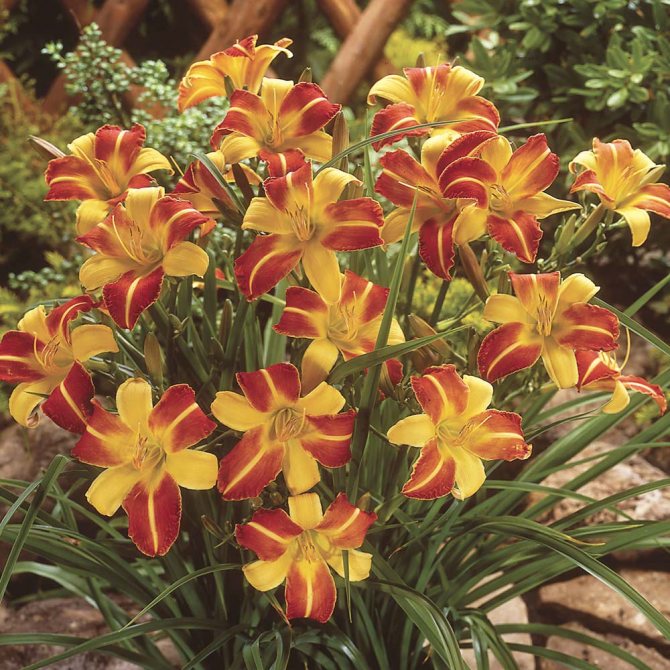

If they promise a winter with little snow, then it is better to cover the daylily
Origin and distribution
Daylilies are native to East Asia, including Korea, Japan and China, where they were grown in gardens as early as 2000 years ago.
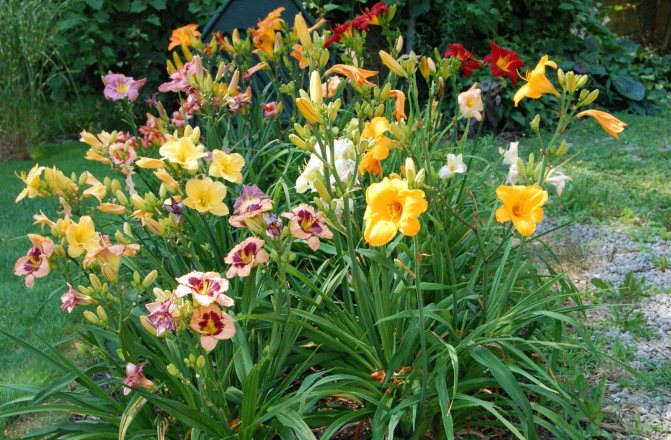

The plant is mentioned even in the writings of Confucius. However, in those days it was considered more vegetable than decorative - pagons and buds were eaten, and jaundice, cirrhosis of the liver, diseases of the bladder and kidneys were treated with juice from young rhizomes.
The first decorative hybrid forms appeared in England and the United States at the beginning of the last century, and now daylilies are also being bred in Canada, France, Germany and Australia.
To date, more than 80 thousand varieties and hybrids have been created.
Most of them are still bred in the States, and the cost of planting material varies from 5-35 to several hundred dollars for varietal novelties.
By flower shape
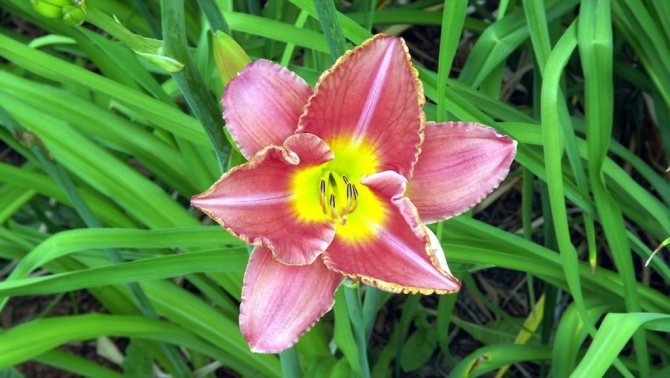

Daylily in the wild
Perhaps the most frequently requested of all. Since the flowers of daylilies have a wide variety of shapes. This is the easiest way to catalog them. Consider this classification:
back to menu ↑
See also: Azalea - description, care, reproduction and possible diseases (35 Photos & Videos) - We comply with the cultivation technique
Single form
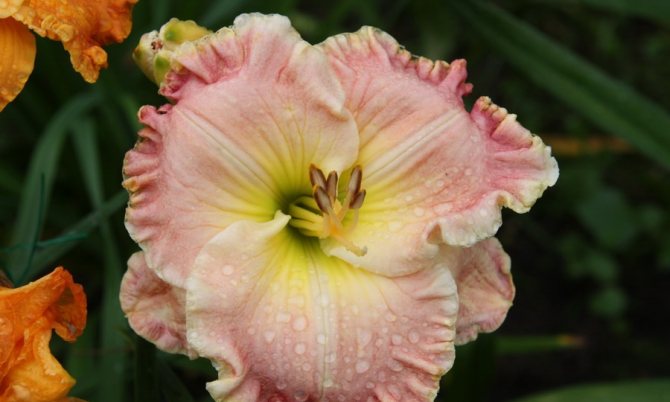

Single daylily varieties Memphis
The flower consists of three petals and three sepals, the number of stamens and pistils is 6 and 1, respectively. This group is the most numerous and most popular with flower growers. The main directions of selection are carried out precisely in it, since it is much easier to get some fixed dominant characters from single flowers than from others.
In turn, the single form is divided into:
- round - short flower segments are circular
- flat - flowers appear flat in profile
- star-shaped - pronounced flower segments are star-shaped
- triangular - petals form a triangle
- tubular - the flower looks like an expanding tube
- informal - irregular arrangement of petals
back to menu ↑
See also: Badan: description, types and varieties, planting and care in the open field, medicinal properties and contraindications (60+ Photos & Videos) + Reviews
Double shape or terry shape
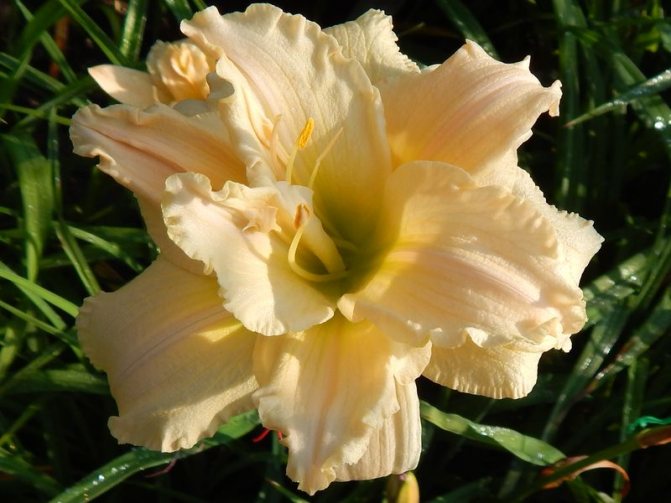

Terry daylily of the type "flower in a flower" grade Seyanets Anasenko
These daylilies have additional petals, which is the main distinguishing feature. The degree of terry or the number of them can vary greatly. In some cases, the density of the petals is so high that the flower resembles a peony. There are two types of double daylilies:
- pion-like - their stamens are transformed into staminodes, like the stamens of peonies
- flower-in-flower structure - creates the illusion of two levels of petals
back to menu ↑
See also: Balsam - decoration of the lower tier: description, varieties, planting and care recommendations (60 Photos & Videos) + Reviews
Arachnids or spiders
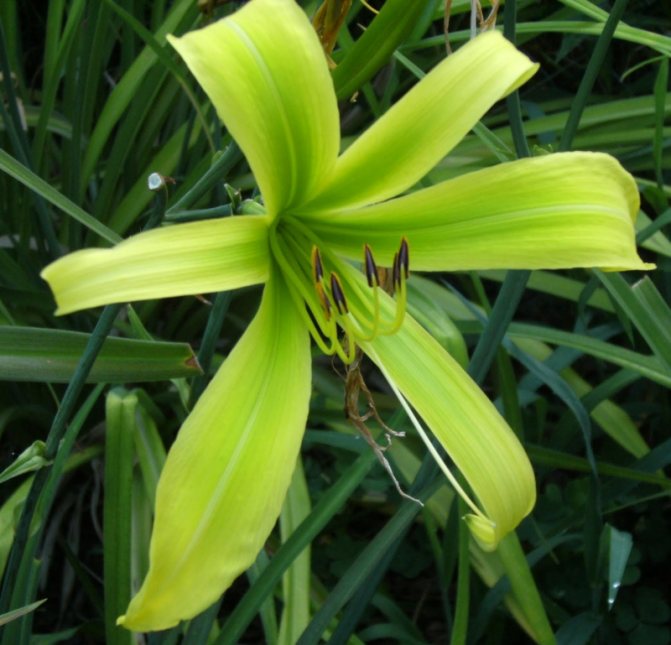

Daylily spider. Variety Green Python
The length of the flower segment is much longer than their width, which creates the illusion of a huge colored spider. According to modern standards, spiders should have a length to width ratio of at least 5 to 1. For spider hybrids, this ratio is assumed to be 4 to 1.
back to menu ↑
See also: Gazebos with barbecue and barbecue - (80+ PHOTOS) Drawings of projects that you can implement yourself
Undefined form
The shape of such flowers does not fall under any classification, or it has some exotic features. But you need to understand that the features relate exclusively to the shape of the flower, but do not in any way affect its aroma, color or ploidy.
This class was specifically introduced to produce various extraordinary forms, most of which are hybrids of spiders that do not fall under its standards.
Usually flowers of indefinite shape have twisted petals, or some structural features. As a rule, this does not affect the aesthetics of the flower, but does not allow it to be attributed to any of the classic forms.
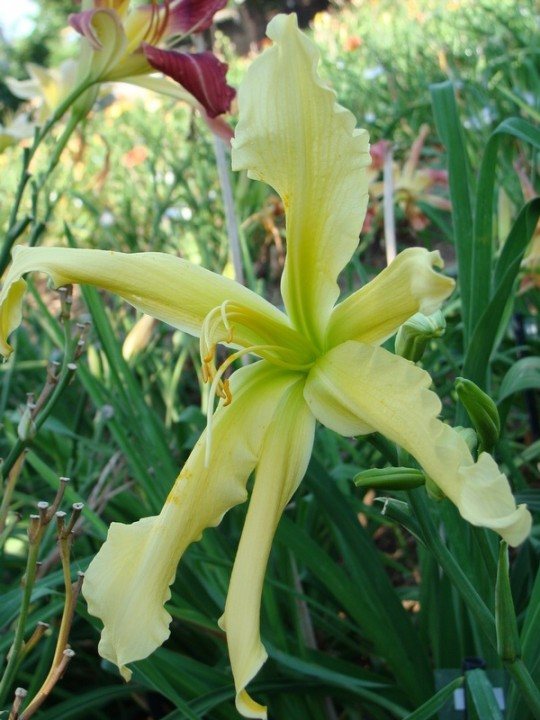

Daylily of indefinite shape (spider with irregular petals). Variety Prague Spring
In turn, the indefinite form is divided into:
- crispy - flowers have, as a rule, petals twisted or bent across
- cascading - twisting has a direction along the petal
- clawed - the ends of the petals are concave, similar to spoons
back to menu ↑
See also: What to plant under the trees: flowers, plants or vegetables? In the garden or garden in the shade (40+ Photos & Videos) + Reviews
Polymer form
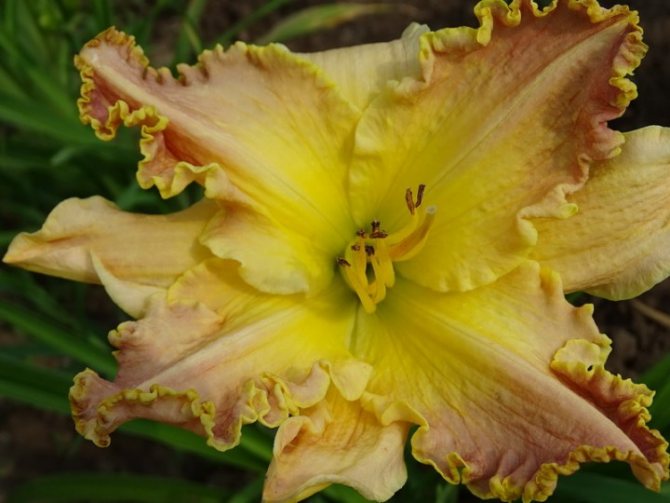

Daylily-polymer with four petals
Unlike classic flowers, which have 3 petals and 3 sepals, polymers can have 4 to 6 petals. Polymers can be either plain or terry. Most polymers are diploid... Currently, work is underway to obtain tetraploid polymers, however, the success so far leaves much to be desired.
Next to what to plant daylilies?
Daylilies are successfully used in landscape design of homestead, summer cottage, garden plots, as well as in city parks, squares, squares. They can be planted against the background of the building wall, and along the paths, near the pond, or make a separate flower bed among the lawn. Alpine slides and rockeries can be decorated with low-growing varieties.
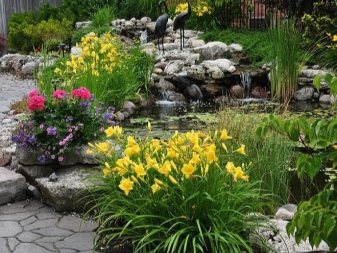

When planting daylilies near buildings and garden structures, it is better to choose varieties whose color will stand out in contrast against a light or dark background of the wall.
You can combine several types of daylilies. Plant the tallest ones directly against the wall. Looks good when daylilies are planted next to bushes, especially if the color of the leaves of the shrub is different. For example, the emerald green of the daylily next to the red-leaved barberry will look very beneficial. Low shrubs, such as mock orange, elderberry, privet, will create a good composition with both tall and dwarf varieties of daylilies.
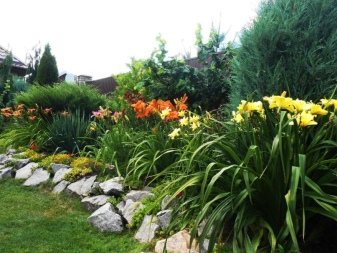

You can arrange a garden path very nicely, especially if it is not straight. Only plant flowers not from the edge, but a little deeper, since daylilies grow and subsequently can close a significant part of the path. And you can also decorate the shore of a pond, pool or any body of water, especially since daylilies are moisture-loving plants that originally grew in tropical rainforests.
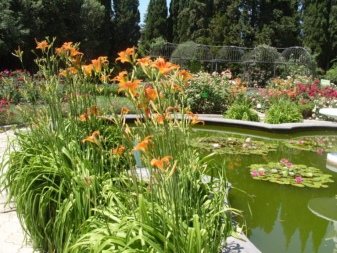

You can make a flower bed in the middle of the lawn. On the flat green surface of the grass, tall flowers will serve as a wonderful decoration for a large space of the lawn. You can grow single solitary bushes or combine them with other flowers, for example, phlox, and pick them up in the same color scheme.
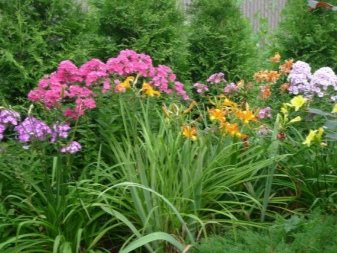

For those who do not like high fences and fences on their site, we can recommend creating a kind of hedge from daylilies, planting them in a row at a close distance from each other. Or make a hedge from acacia bushes, and plant yellow daylilies in the foreground.
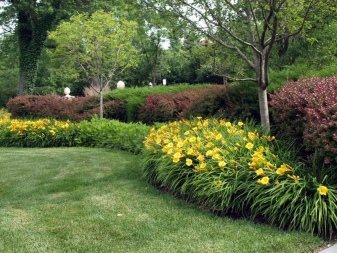

Another use for these colors is alpine slides. In this case, it is recommended to plant plants not at the very top, but on a slope, it is advisable to use low-growing varieties and in small quantities, because usually low ground cover plants are planted on such hills. Currently, miniature varieties of daylilies have been bred with thin leaves, like those of cereal plants, the height of which does not exceed 25 cm, and small flowers no more than 4 cm in size (Penny Earned, Penny's Worth). They grow in lush bushes and are perfect for rockeries.
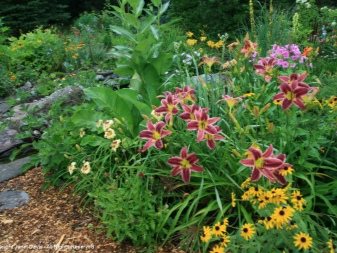

Another big pleasant plus of daylilies is their wonderful delicate aroma. Therefore, these beautiful flowers can be used to decorate the recreation area. After a sultry July day in the evening it is very pleasant to sit somewhere in a gazebo, on a cozy garden bench or swing on a swing. There is a particularly fragrant, fragrant type of daylilies (Siloam Double Classic), which is not inferior in beauty to roses.
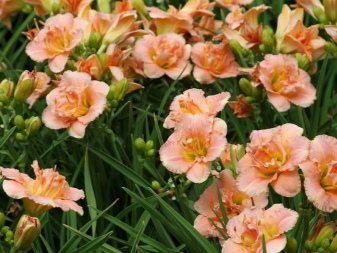

What feeding is required for daylilies
Feeding
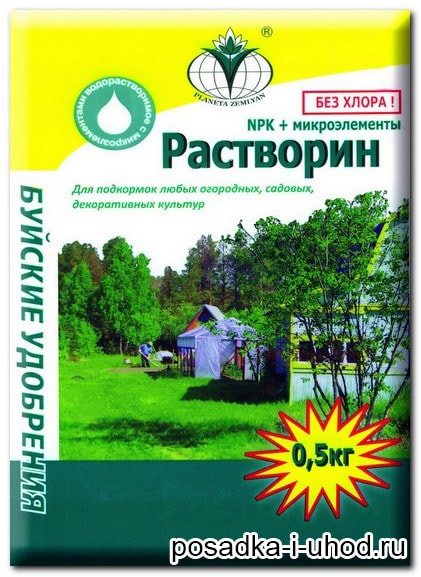

k recommends to spend in three terms:
- spring (late April - early May);
- summer (before flowering);
- autumn (in August - early September).
In this case, in spring and summer, mineral fertilizers, such as "Solution", are used in an amount of 20-25 g / m2. In the autumn period, phosphorus-potassium is added in the same quantities. For large, overgrown bushes, it is recommended to increase the amount of fertilizer.
Registration rules
Experienced gardeners always plan their site when they plan to plant perennial crops. therefore if you want to break a flower bed or make a flower garden with daylilies, you must first find out as much as possible about this plant: what species exist, in what place it will grow better, how it will be combined with other plants and the general appearance of the territory as a whole.
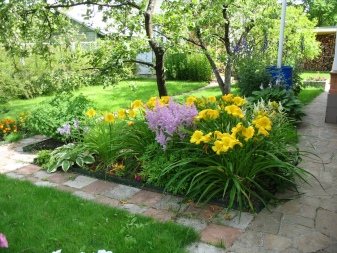

There are about 30 thousand different types of daylilies. These are mainly tall flowers (the height of some species exceeds 1 m).
On a high stem, buds are formed, which gradually bloom one after another. One bud blooms for only a day, but since there are many of them on the peduncle, the plant blooms for almost a month, or even longer. Daylily leaves are narrow and long, growing from the base of the root, forming a rather large, voluminous bush. One adult plant requires about one meter of free space. And this must be taken into account when forming a flower garden with daylilies.
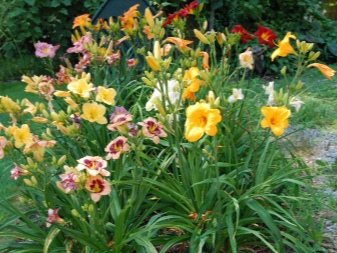

And also when planning the planting of daylilies, you need to remember that although this plant is relatively unpretentious, it is still better to choose a sunny place. Most often, brown-orange and yellow daylilies grow in our climatic zone. But there are many other varieties with all sorts of shades, there are even dark purple, almost black flowers.
Light flowers are planted in the sun, but dark flowers with reddish shades are best placed in partial shade, since the color of the petals fades a little in the sun and loses its original color. The only condition for good flowering of the daylily is at least 6-7 hours of sunlight.
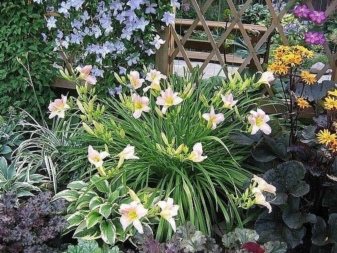

Daylilies look good both alone and in combination with other plants and flowers. Solitary landings are called tapeworms. Daylilies of the same variety can be planted in them, or several species of suitable color can be selected. In order for the flower garden to please the eye throughout the summer, daylilies can be combined with other flowers, but when choosing neighbors, take into account that daylilies bloom mainly in June-July.Although it still depends on the type of plant, for example, the Middendorf daylily is considered the earliest and begins to bloom as early as May.
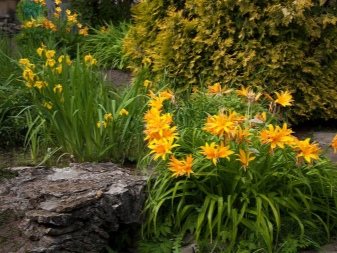

Separately, it can be noted that the flowers of daylilies do not have monochromatic colors. There are several shades in the petals, and it happens that the core is painted in a contrasting color and has a clear outline, or, conversely, the color smoothly changes its shade from the center to the edges of the petals. Such color features of daylilies can be used for any design solution of a flower garden.
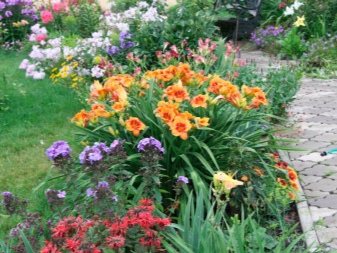

Varieties of daylilies: photo
Dividing the bush
This method is the simplest and most effective, which is why most gardeners use it. The main advantage is that young plants retain the characteristics of the mother flowers. You can divide the bushes throughout the growing season. It is best to use a daylily for reproduction that has reached the age of three. It is recommended to replant when the buds begin to decrease in size from year to year. The optimal time for division is late summer or early autumn.
Planting process
The place for growing daylilies is chosen for a long time, since the plant belongs to perennial crops. 2-3 weeks before the planned planting, it must be carefully dug up, large stones and plant residues must be removed. It is recommended to fertilize the flowerbed with organic matter, for example, mullein or humus at the rate of 3-5 kg / m2. For planting, individual pits are prepared with a depth of 30 cm, the optimal width is 14-20 cm.The distance between plants depends on the variety, varies from 40 to 70 cm.Step-by-step planting algorithm:
- At the bottom of the planting hole, lay a drainage made of broken bricks or pebbles up to 5 cm thick. Add 200 g of wood ash to prevent root rot. Sprinkle with a layer of nutritious substrate (a mixture of garden soil, peat and humus in equal proportions).
- Gently place the plant in the center of the hole, spread evenly on a fertile pillow. The root collar should be flush with the ground surface.
- Fill the voids with a fertile layer of earth. Tamp the soil next to the seedling.
Water the plant abundantly immediately after planting. Carry out mulching with peat, sawdust or wood chips in a thin layer of 3-5 cm.If you plan to organize a multi-species flower bed, then you can immediately plant other decorative crops between the daylilies.
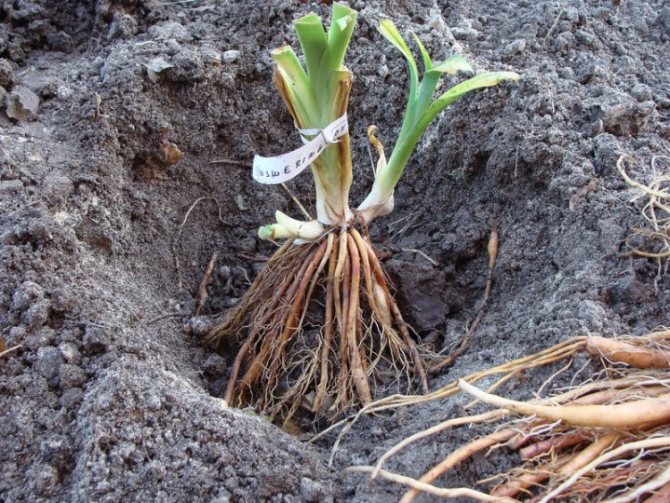

Content
- Listen to the article
- Description
- Growing daylilies in the garden How to grow
- The soil
- What colors are combined
- When to plant
- How to care
- Natural species of daylilies
Mulching
A large number of daylily varieties are adapted for the southern regions, so mulching is simply necessary for them. Mulching has a positive effect on:
- regulation of soil moisture;
- exclusion of plant depletion;
- reducing the amount of weeds;
- protecting the soil from temperature fluctuations.
Sawdust, peat, humus are often used as natural mulch. This type of mulch additionally provides soil enrichment with organic fertilizers, increases air permeability and optimizes moisture content.
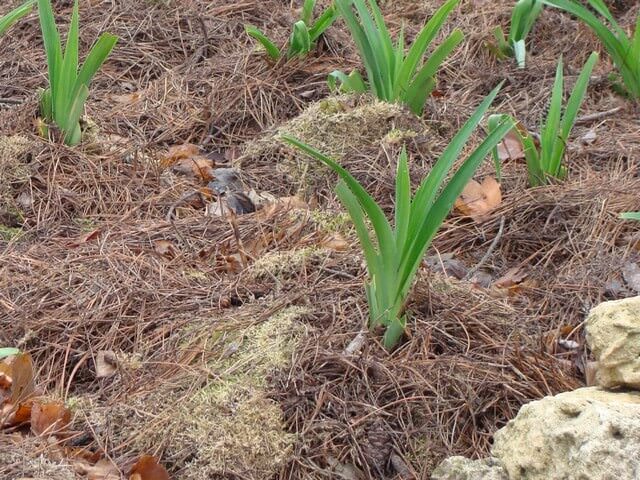

Mulching is of two types:
- cosmetic provides the aesthetics of the soil surface appearance. Usually the cosmetic layer of mulch is about 3 centimeters;
- functional mulching is laid in a layer of about 10 centimeters.
In a harsh winter, mulch is laid in a layer of 5 cm, the main components of such mulch are straw, needles, leaves. The main purpose of such mulching is to keep the soil from freezing.
In summer, mulch is laid to protect the soil from drying out and reduce the growth of weeds.
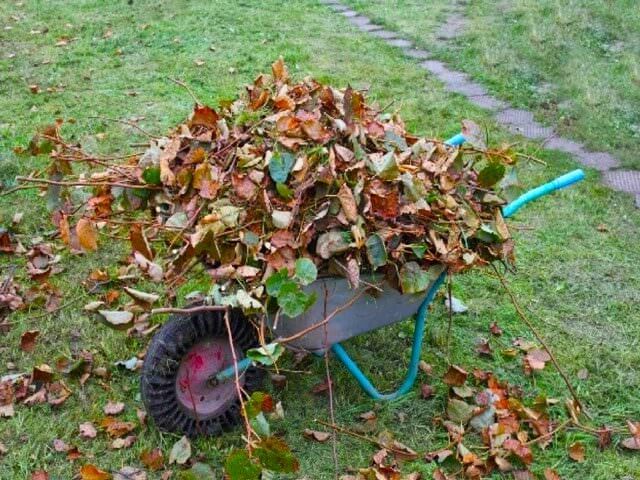

The soil
The soil for daylilies should be neutral or slightly acidic. The soil for plants is prepared in advance and carefully, because daylilies have to grow in a permanent place for a long time - 6-15 years.
The soil is dug up to a depth of 30–35 cm. In heavy clay soil, compost, peat, sand are added so that moisture does not stagnate. Sandy soils, on the contrary, are light and poorly retain water and nutrients, therefore they are enriched with humus, clay is added.
With a close occurrence of groundwater, daylilies are planted on ridges 10-15 cm high.
General information
Daylily, or, as it is popularly called, krasodnev, belongs to the Asphodelov family. The botanical name, Hemerocallis, derived from the combination of the Greek for "day" and "beautiful," is inspired by the short-term flowering of each bud, opening up and staying on the bush for a day. Wild representatives of the genus can be found in the Far East. Cultivated species are grown everywhere.
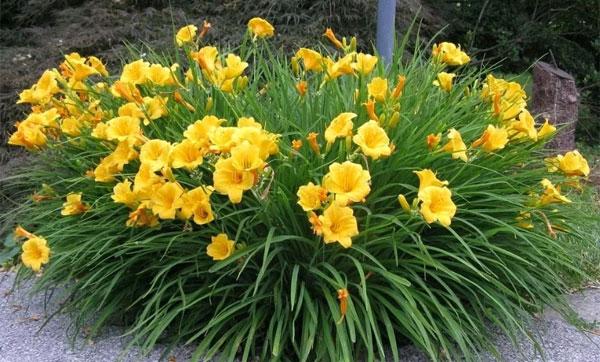

Daylily is a herbaceous perennial; the roots are fleshy, cord-like, forming thickenings or stolons. Leaves broadly linear, whole, two-row; depending on the grade, they can be straight or curved in an arc. Leafy flower stalks; their height can vary from 30 to 150 cm.
The flowers of the daylily are funnel-shaped, large, the corolla consists of six bent, separate petals with a small tube of stamens. Collected in loose inflorescences up to 10 pcs; 3 buds can open at the same time. Yellowish, pinkish, reddish or brownish shades prevail. The petals are rarely monochromatic, decorated with fancy strokes or specks. Daylilies bloom in summer. The buds are laid abundantly - the flowering of an adult bush can last a month. After pollination, a triangular capsule with glossy black seeds ripens.
Irrigation methods for daylilies
This plant can withstand drought for a long time, it acquired this property due to the structure and potential of the root system. Still, it must be remembered that regular and abundant watering provokes the ripening of large and bright daylily buds.
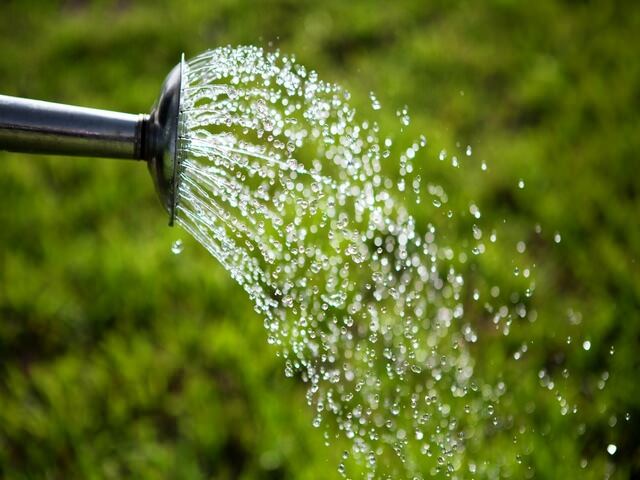

During the growing season, the daylily should be watered about once a week. But the timing, of course, depends on the climatic conditions of the region and the age of the plant. If the climate of the area is very dry, then irrigation should be regulated in relation to soil indicators.
It is not worth pinning special hopes on rain; to check that the soil is saturated with moisture after rain, you should check the soil to a depth of 10 centimeters: if there is enough moisture, then the irrigation process can be rejected for a while. The daylily requires regular and abundant watering, the root zone of the plant should be saturated with moisture to a depth of about 50 cm or more.
On sandy soils, additional watering is often required, since such a structure does not retain moisture well. The use of mulch is very helpful in maintaining moisture. Sawdust, humus or peat are most often used as mulch.
In the hot summer season, watering is recommended in the evening. Watering should be carried out directly under the daylily bush, spraying can lead to uneven color of the buds. Recently, the use of drip irrigation has become relevant. This type of irrigation ensures an even and regular distribution of moisture in the soil. For daylily it is quite possible to use sprinkling, but it is better to use it after flowering.
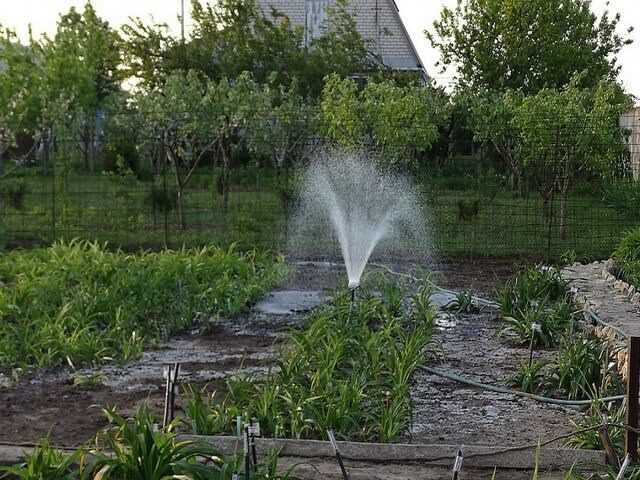

Like any other plant, the lily flower does not tolerate waterlogging, moreover, high humidity often provokes the appearance of pests and diseases. The amount of watering depends on the age category and size of the bush.
Modern breeding is aimed at improving the appearance of the flower and developing its resistance and adaptation to adverse conditions.The main goal of breeders is to develop varieties that are resistant to diseases and pests, low temperatures and drought tolerance.
Important: Ensuring regular watering is vital for the daylily. This aspect deserves special attention during the hot summer months.
The best varieties
Let's take a closer look at them. As mentioned earlier, today more than 70,000 varieties of krasodnev are known, so it is very difficult for novice gardeners to decide which ones to use for planting in their garden.
Among the most common varieties are the following:
- Chang Dinesti - was bred in 2008. It is distinguished by a delicate coral pink color and an orange border on the petals. The highlight of the flowers is that they change their shade depending on what the weather is on the street at the moment. Up to 50 buds can form on one bush.
- Paula Dask - first appeared on sale in 2011 and almost immediately became very popular among many gardeners. The buds are perfectly regular in shape, pink in color and yellow edging. Many people like this variety for its easy planting and care. Photos of daylily flowers amaze a huge number of gardeners with their beauty. The people also call the buds diamonds.
- Robin Lee is another creation of American breeders that has been grown around the world since 2010. During the flowering period, the bushes are covered with pink buds with a red tint and a white border, giving the plant a majestic appearance. The main difference is the graceful shape of the flowers, which are quite large in size. However, despite this, the beautiful days do not create clutter in the garden, but on the contrary, they look very light.
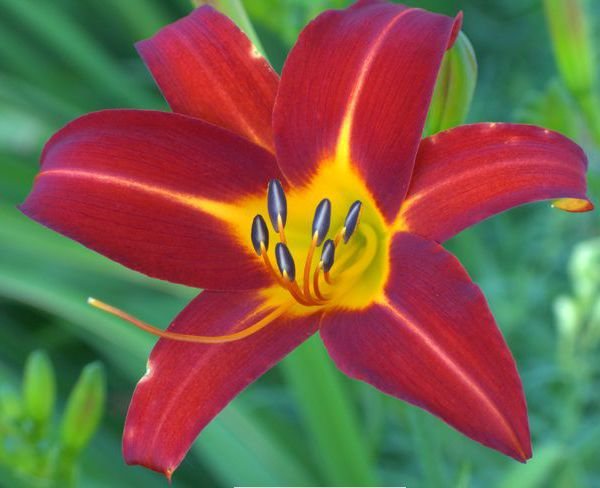

These are the most famous and widespread daylilies around the world. Planting of these varieties can be carried out in almost all regions of our country, as well as on any type of soil, since during their breeding, the emphasis was placed not only on an attractive and aesthetic appearance, but also on high characteristics. Plants adapt perfectly to harsh climatic conditions.
How to choose high-quality planting material when buying?


Daylily rhizomes
Shops and garden centers for planting offer daylily rhizomes... Before purchasing, you should carefully inspect the transparent plastic wrap to ensure that the root system is vibrant, healthy and dense. It should be noted that if there are few roots and they are weak and thin, then such a plant will gain strength for flowering for another 2-3 years. The rhizome should not have soft and rotten parts.
When buying new products, you should find out how the variety or hybrid is adapted to the local climate. Hundreds of new daylilies enter the market every year. Most of these plants were bred in the subtropics of the United States and it may happen that in the middle Russian latitudes their acclimatization will be difficult, therefore, experts often advise flower growers not to forget about old reliable and proven varieties.
What you need to know about classification of daylilies
As we have already said, there are a lot of varieties and forms of these beautiful plants. Breeders have developed a classification that will certainly help in choosing the right variety:
- Daylily can be divided according to the type of vegetation. There are plants in which a dormant period (dormant) begins in winter, of the evergreen type, and semi-evergreen.
- Plants can differ depending on the type of chromosomes.
- Some varieties are fragrant, and there are those that have no smell at all.
- The color range of hybrid varieties is presented in 11 basic shades. Some varieties can be classified as conditionally white. There are types with pastel, pink, red, purple, brown, with very dark (almost black), yellow shades. In addition, some varieties have several shades, for example, two-three-color, as well as with transitional shades.

